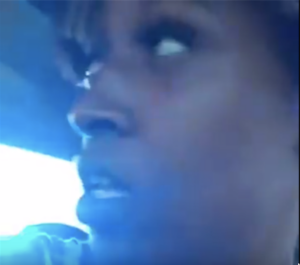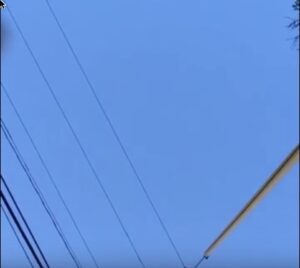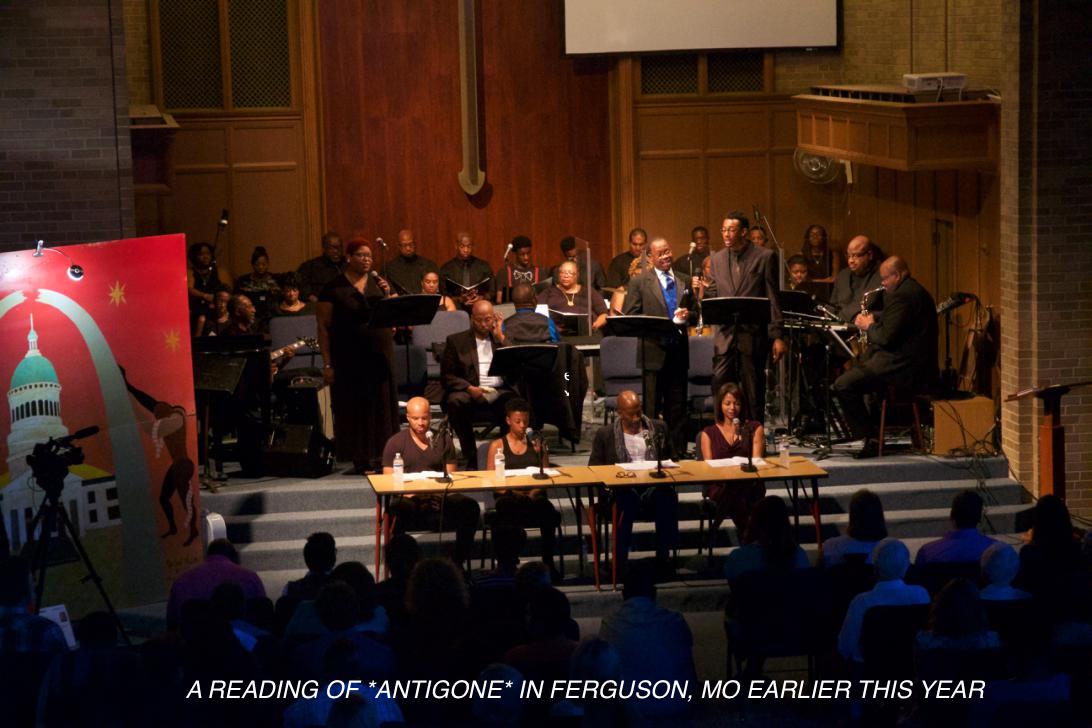On July 6, 2016, St. Anthony police shot Philando Castile during a traffic stop. The police thought his “wide-set nose” matched that of a robbery suspect. For Mr. Castile, this was the forty-sixth and last such stop he would endure in the area for driving while Black. The cop told Mr. Castile to produce his license and registration. In an excess of caution, he responded that he was carrying a weapon, for which he had a permit. When Mr. Castile reached for his wallet to produce his documents, the panicked police officer shot him several times, leading to his death.
What made this umpteenth shooting stand out was that at this moment, Castile’s girlfriend Diamond Reynolds began shooting networked video on Facebook Live. Showing astonishing composure, she describes what has just happened in detail, calling the police officer, who continues to point his weapon at her, “sir.” Her face is composed, elegant, perhaps elegiac. The phone camera makes her appear blue, unintentionally evoking that articulation of Black and blue from Miles Davis to David Hammons. Realizing that Castile has passed, she repeatedly implores: “Please don’t tell me that he’s gone.”

Reynolds calls on the law not to break its own promise to protect and serve. She speaks of Castile’s compliance with the officer’s request and of the “breach of procedure”—her term. In the classical tragedy, Antigone defies the state by burying her slane rebel brother despite a royal prohibition. She puts justice and the sibling bond above process of law, for which she dies a living death—she is buried alive. Reynolds speaks to the law and demands that it not speak of what it has done. In that silence, Castile will not yet have died. All the while Reynolds is live, Facebook Live, and alive but under threat of death from the gun.
For minutes, what we see is a static view. A suburban road. Wires. Evening. The messy physicality of the network that enables us to see her. It becomes our view because she is being arrested, presumably for the offense of being present. Her camera, lying on the ground as if in a machine die-in, continues to stream live. Like that of her foresister Antigone, Reynolds’ speech act has not prevented the law from its enactment of death. Antigone in St. Paul. St. Paul who, as Saul, was stopped on the road to Damascus of all places, accused by Jesus of persecution. But he was not frisked and he was not shot. As Paul, he went on to write the one piece of scripture cited (incorrectly) by Trump, Two Corinthians (usually known as Second Corinthians but written 2 Corinthians).

Reynolds was unaccountably not released until 5 a.m. the following day. Just days after the presidential election, as if to keep the case out of the public eye, charges were finally filed against Officer Jeronimo Yanez. He is charged with second-degree manslaughter and two counts of intentional discharge of a dangerous weapon. Conviction could lead to a sentence of ten years, although experience cautions us to expect acquittal or a lesser sentence at best. Reynolds continues to live in the precarious margins of white Minnesota. It is hard to see this as justice.
Diamond Reynolds has created a tragic form for our fragmented time. A time in which Vine, the popular but soon-to-be-discontinued six-second video format has created new narratives and in which the 140-character character assassination has won the presidency. Reynolds’ ten-minute film has unity of time, place, and action. It has loss. It is not about the hero. It expresses the fundamental separation and antagonism of white supremacy, in which, as Ta-Nehisi Coates has put it: “white supremacy is not merely the work of hotheaded demagogues, or a matter of false consciousness, but a force so fundamental to America that it is difficult to imagine the country without it.” There is no need at present for that imaginary. The election was underscored by the question: “do Black Lives Matter?” Its result reaffirms that for the white majority, the answer remains “no.” The space of representation does not, in fact, include Black people, despite the Obama presidency.
Our task, however, is precisely to imagine and create that hitherto non-existent America in which Black lives matter, where the trading is in carbon and we appear to each other as fully human. That will require forming what Stuart Hall used to call a “broad democratic alliance.” Electoral work, direct action, images and imagination, mourning and militancy are all part of this formation. It failed miserably in the 1980s UK and it won’t be easy this time.


